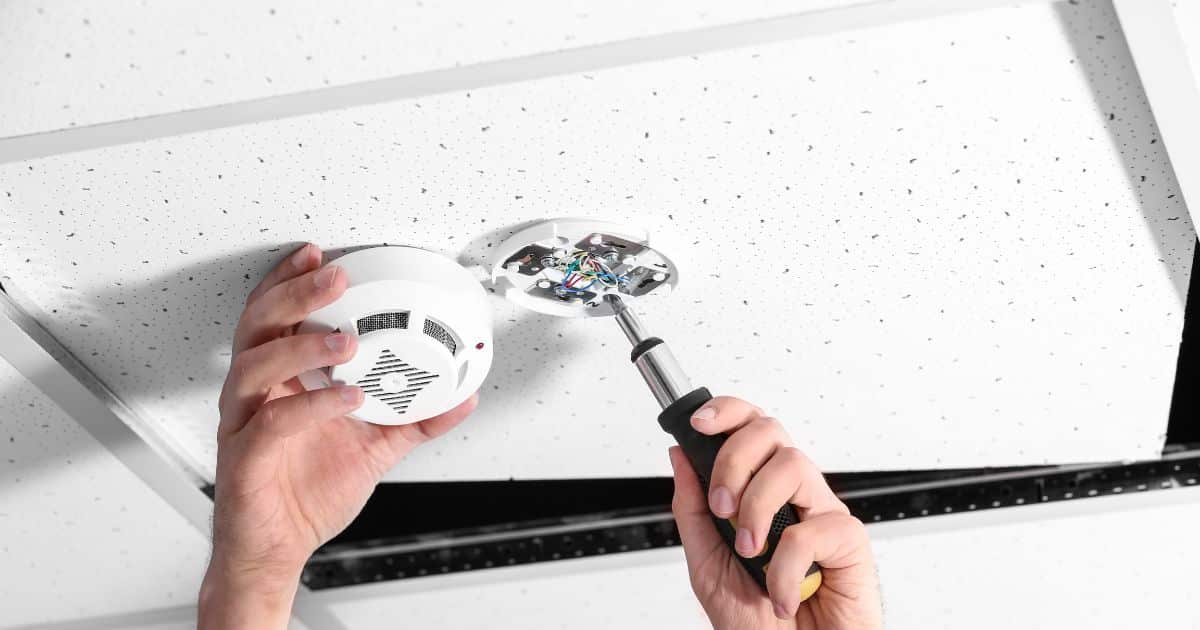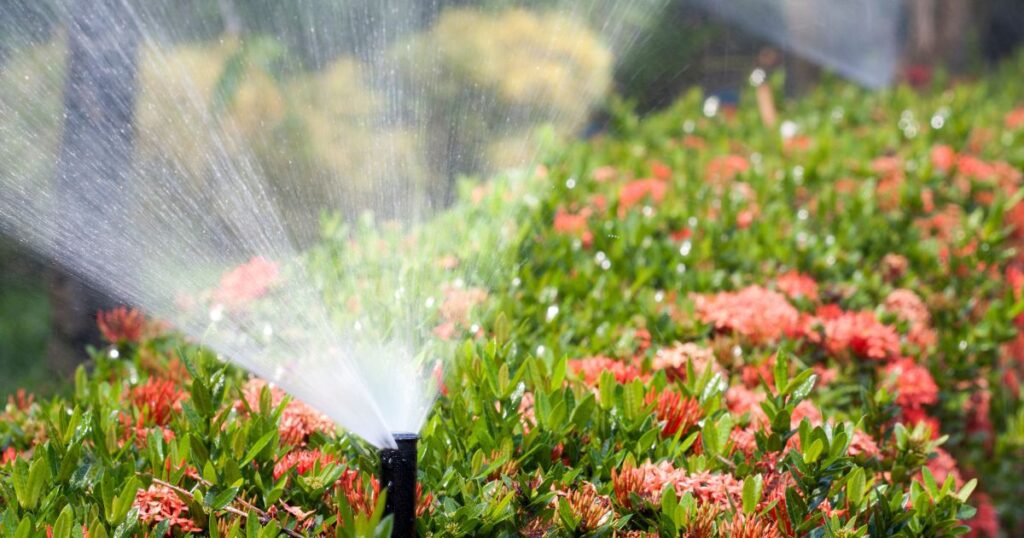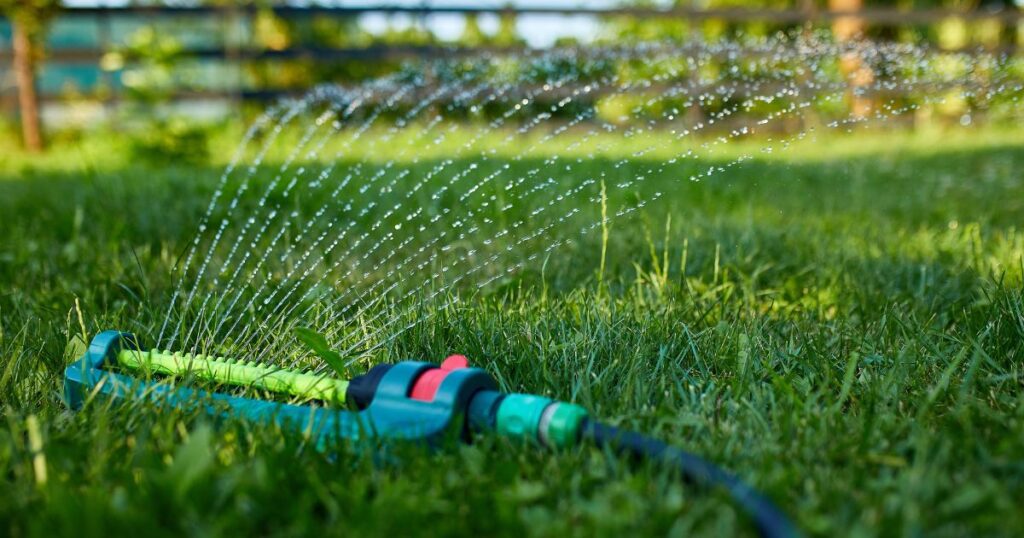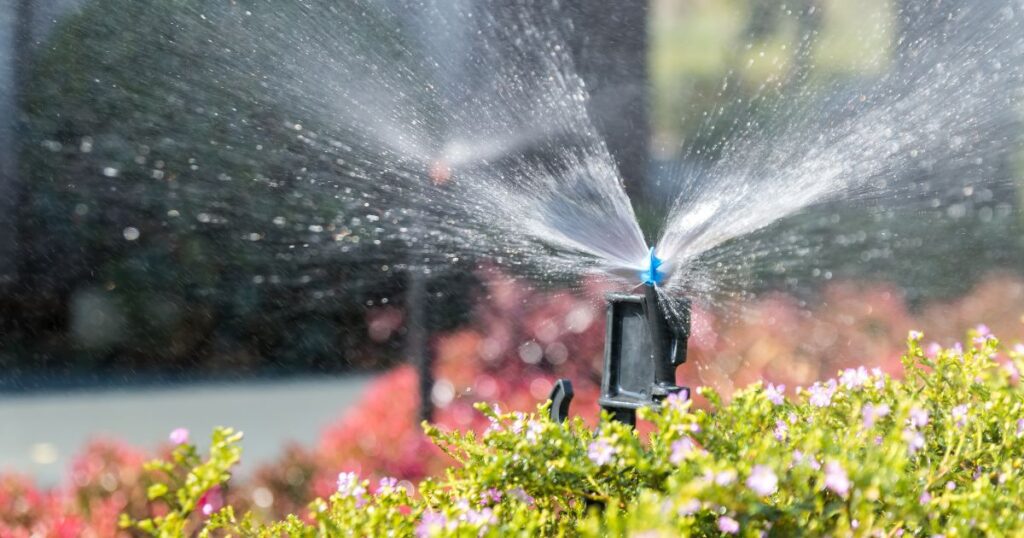
Welcome to the thrilling world of fire safety! Today, we’re diving into the captivating realm of fire sprinkler risers. Ever wondered what these magical contraptions are and why they’re so crucial in keeping our buildings safe? Buckle up because we’ve got some fantastic information coming the way that will leave you enlightened and eager to know more about these unsung heroes of fire protection.
A fire sprinkler riser is a vital component of a building’s fire suppression system. It serves as the main connection point between the water supply and the sprinkler system. Essentially, it acts as the gateway for water flow, allowing the sprinklers to activate in the event of a fire, swiftly dousing the flames and minimizing potential damage.
Definition of a Sprinkler Riser
A sprinkler riser is a vertical pipe that connects the underground water supply to the overhead fire sprinklers in a building. It has several components, including pipes, valves, gauges, and fittings, which work together to control and supply water to the sprinklers when they are activated by heat from a fire.
The Importance of Understanding the Role of a Sprinkler Riser in Fire Protection Systems
A crucial component in fire protection systems, a sprinkler riser plays a pivotal role in safeguarding buildings from potential disasters. So, what is a sprinkler riser? It not only ensures the proper installation of the system, optimizing its effectiveness during emergencies but also empowers occupants with valuable knowledge to swiftly and efficiently respond to fire incidents, minimizing potential losses. By understanding the significance of this vital element, readers will gain insight into fire safety measures that can help maintain the well-being of their environment.
Sprinkler systems have proven time and time again to be effective at controlling fires until firefighters arrive on site. Without this system or with incorrect installation or maintenance procedures, fires can quickly become uncontrollable, causing extensive damage or, even worse—losses.
The importance of understanding this component extends beyond just building owners; everyone who occupies buildings should have some basic knowledge about this system, in emergencies where every second counts, basic knowledge can be life-saving.
In addition to being essential for safety reasons, installing an effective sprinkler riser system can also save costs associated with damages caused by fires which can run into millions. Having an efficient water supply automatically controls flames significantly reduces the loss from fires.
Overview of Fire Protection Systems
Fire protection systems are designed to suppress or extinguish fires in buildings and other structures. These systems may include a combination of fire alarms, fire extinguishers, sprinkler systems, and other fire suppression agents.
Brief Explanation of Fire Protection Systems and Their Components
Fire protection systems can be divided into two main categories: active and passive. Active protection systems are those that require some action to suppress or extinguish a fire, such as sprinkler systems or fire extinguishers.
Passive systems, on the other hand, are designed to control the spread of a fire by containing it within a defined space. Sprinkler systems are one of the most common active fire protection measures used in buildings today.
They consist of an interconnected network of pipes that carry water from a dedicated supply line to sprinkler heads located throughout the building. When heat from a fire activates one or more sprinklers, water is released onto the flames to control or extinguish the blaze.
Other components commonly found in active fire protection systems include smoke detectors and carbon monoxide detectors. Smoke detectors use sensors to detect particles produced by smoke before they become visible flames.
Carbon monoxide detectors monitor levels of this poisonous gas in order to alert occupants before they become sickened by it. Passive fire protection measures may include things like compartmentalization — using walls and doors to create “fire zones” within large spaces — or using materials with high resistance to heat and flames.
Emphasis on the Importance of Sprinkler Systems in Fire Protection
Sprinkler systems play an essential role in protecting buildings from fires. According to information published by the National Fire Protection Association (NFPA), buildings with functioning automatic sprinklers experience 60% less property damage than fires that occur in unprotected buildings. Sprinklers can also help prevent loss of life during a fire.
While they may not be able to extinguish every blaze, they can help control the spread of flames long enough for occupants to escape the building safely. In fact, the NFPA has reported that no one has ever died in a fire in a fully sprinkled building.
Additionally, sprinkler systems may help reduce the risk of fires spreading beyond a single room or area within a building. This is because they are designed to activate individually based on heat levels in specific areas of a building, rather than all at once.
By controlling fires at their source and containing them within small areas, sprinklers can help prevent significant property damage and loss of life during emergencies. Understanding how fire protection systems work and how they can be used effectively is essential to preventing loss from fires.
Sprinkler systems are an important part of any fire protection system and are responsible for preventing thousands of injuries and fatalities each year. By implementing these systems properly and maintaining them regularly, we can all work together to keep our communities safe from fires.
Understanding Sprinkler Riser Components
Now that we understand what a sprinkler riser is let’s take a closer look at its various components. A sprinkler riser is made up of pipes, valves, and gauges that work together to detect and extinguish fires. Each component plays a critical role in the system’s performance.
Pipes
The pipes in a sprinkler riser system carry water or other extinguishing agents to the sprinklers. Depending on the type of system, the pipes can be made of different materials, such as steel, plastic, or copper. The size and thickness of these pipes depend on the water flow rate required for extinguishing fires in your building.
The pipes vary in diameter, ranging from 1/2 inch to 6 inches, depending on the volume of water needed to put out fires in different parts of your building. Some buildings require larger pipe diameters with thicker walls because they need more water pressure to reach high elevations or cover large areas.
Valves
A valve is a mechanical device that regulates fluid flow within a pipeline network. The most common type of valve used in sprinkler systems is called a control valve. It controls the flow of water through the system and activates when it detects heat from a fire.
A pressure relief valve releases built-up pressure within the system due to temperature changes or blockages caused by debris clogging up the pipeline network. This helps prevent damage or leaks in your piping.
Gauges
Gauges are instruments used for measuring fluid pressure within piping networks such as sprinkler systems. They are essential for monitoring pressure levels and ensuring that your sprinkler system is working correctly during an emergency situation.
The most common type of gauge used in sprinkler systems is a pressure gauge. This gauge measures the water pressure in the system and provides vital information about the system’s performance.
It helps to determine whether or not the system has adequate pressure to extinguish fires quickly and efficiently. Another type of gauge that may be installed on a sprinkler riser is a flow meter.
This measures how much water is flowing through the pipes at any given time. It can help identify potential blockages, leaks, or other issues that could affect the efficiency of your sprinkler system.
RELATED: How To Raise A Sprinkler Head: Reaching New Heights
Types of Sprinkler Risers
Sprinkler risers are classified according to their application, design, and method of operation. Each type serves a specific purpose in protecting buildings against fire hazards. The following are the most common types of sprinkler risers:
Wet Pipe Sprinkler System
A wet pipe sprinkler system is the simplest and most common type of fire protection system used in commercial and residential buildings. The system consists of a network of pipes connected to a water supply source that is always under pressure. The sprinklers are attached directly to the pipes and contain heat-sensitive elements that activate when exposed to high temperatures caused by fires.
Wet pipe systems are ideal for areas where freezing temperatures are not expected because they require constant water pressure to function properly. They provide rapid response time, easy installation, and low maintenance costs compared to other systems.
Dry Pipe Sprinkler System
A dry pipe sprinkler system is used in areas where temperatures can drop below freezing point, causing water in the pipes to freeze and burst them open, leading to malfunctions and ineffectiveness during an emergency situation. This system works by filling the pipes with compressed air or nitrogen rather than water, which pressurizes it in readiness for activation by heat-sensitive detectors when a fire occurs, releasing air from the main valve and allowing water into the piping system. Dry pipe systems are ideal for buildings exposed to below-freezing temperatures as well as those containing delicate equipment or materials sensitive to moisture damage, such as data centers or museums.
Deluge Sprinkler System
A deluge sprinkler system is designed for use in hazardous environments such as chemical plants or oil refineries where fires spread rapidly due to highly flammable liquids or gases. This system uses open nozzles that spray water continuously over large areas of a building in the event of a fire.
The system works by keeping all sprinkler heads open, connected to the water supply, and activated by heat or smoke detectors, hence requiring huge amounts of water supplied at high pressure to extinguish fires quickly. Deluge systems are ideal for environments with high-risk fire hazards and require large amounts of water to be released in a short period.
Pre-Action Sprinkler System
A pre-action sprinkler system is designed for areas where the accidental discharge of water from the pipes would cause significant damage, such as museums or libraries. The system requires two factors for activation: the detection of heat or smoke by fire sensors and manual activation by someone on-site (usually via a pull station).
This system works by maintaining dry pipes filled with compressed air or nitrogen in readiness for activation, followed by opening the pre-action valve releasing water into the pipes when both detectors are activated. Pre-action systems provide maximum protection while minimizing possible damage caused by accidental activations.
Installation and Maintenance
When it comes to installing a sprinkler riser system, it is essential that all components are installed correctly to ensure the system functions effectively in the event of a fire. Proper installation procedures involve several key steps, including:
Step 1: Designing the System
The first step in proper installation of a sprinkler riser system is designing the system. This includes determining the size and layout of pipes, valves, and other components based on the location and size of the building, as well as ensuring that all local fire codes are followed.
Step 2: Assembling Components
The next step is assembling all the necessary components for the sprinkler riser system. This includes pipes, fittings, valves, gauges, and any other necessary equipment. It is important to ensure that all components are compatible with one another and that they meet local fire codes.
Step 3: Installation
Once all components have been assembled according to design specifications, it’s time for installation. This typically involves routing pipes through walls or ceilings while ensuring that they remain hidden from view whenever possible. All pipes must be securely fastened to prevent movement during an earthquake or other disaster.
Step 4: Testing
The final step in the proper installation of a sprinkler riser system is testing. Once everything has been installed correctly, water pressure must be tested throughout the entire system under normal operating conditions to ensure there are no leaks or other problems that could compromise its effectiveness in an emergency situation.
Maintaining a sprinkler riser system properly requires regular inspections and maintenance checks by trained professionals who understand how these systems work. Routine maintenance checks should include the following:
Cleaning All Sprinkler Heads
Over time, sprinkler heads can become clogged with debris, preventing them from working effectively in an emergency. Therefore, it is important to clean all sprinkler heads periodically to ensure they will work properly when needed.
Checking Valve Operation
Valve operation is critical to the effectiveness of a sprinkler riser system. Regular checks should be conducted to ensure all valves are functioning correctly and can open and close when needed.
Testing Water Pressure
In addition to testing water pressure during installation, routine maintenance checks should include regular water pressure testing throughout the entire system under normal operating conditions.
Conducting Annual Inspections
An annual inspection by a qualified professional is essential for ensuring that a sprinkler riser system is functioning correctly and up-to-date with fire code requirements. This inspection should include checking all components for wear or damage and ensuring that all parts are still compatible with one another.
The Critical Importance of Sprinkler Risers in Fire Protection
The main goal of a sprinkler system is to control or extinguish fires before they become catastrophic. A properly installed and maintained sprinkler riser system plays a critical role in fire protection by minimizing the effects of fire on people, property, and operations. Sprinkler systems act as the first line of defense against fires, providing crucial time for evacuation and firefighting activities.
Properly designed and installed sprinkler riser systems are capable of quickly detecting a fire, providing an alarm signal to occupants and emergency responders while simultaneously suppressing the flames. The quick response significantly reduces the likelihood of injuries or fatalities resulting from fires.
A well-maintained sprinkler system can also prevent significant damage to property by controlling or extinguishing fires before they spread beyond control. Most businesses rely heavily on their building assets to operate successfully, and any damage due to fire can severely impact their operations.
An effective sprinkler riser system helps minimize damage caused by fires, thus saving business owners thousands, if not millions, in repair costs. Sprinklers have been proven effective in preventing loss from fires countless times over the years; examples include the MGM Grand hotel fire in Las Vegas in 1980 that resulted in 85 deaths and $200 million worth of damages; if that hotel had had a functioning sprinkler riser system at that time, much of this loss could have been prevented.

Proper Installation Procedures for Sprinkler Riser Systems
Proper installation procedures for sprinkler riser systems include various steps such as selecting an appropriate location for installation, designing accurate plans based on specifications outlined in NFPA codes and standards, and installing all components correctly, including pipes, valves, pressure gauges, backflow preventers among others. Before installing a sprinkler riser system, it is essential to conduct thorough research into local regulations regarding installations. The National Fire Protection Association (NFPA) publishes codes and standards that must be followed for proper installation of sprinkler riser systems.
These guidelines vary depending on the type of system being installed. A key factor in ensuring the proper installation of a sprinkler riser system is to make sure that all components are installed and integrated correctly.
This involves ensuring that all pipes, valves, and gauges are located in appropriate positions and correctly connected to one another. Properly installing a backflow preventer is also critical during the installation process.
A backflow preventer ensures that water flows only in one direction, preventing any contaminants or pollutants from entering the public water supply. To ensure a successful installation process, it is recommended to hire an experienced professional with extensive knowledge and experience in installing sprinkler riser systems.
Maintenance Procedures for Sprinkler Riser Systems
Maintaining a sprinkler riser system involves regular inspections, testing, and maintenance activities designed to ensure that the system performs as intended when needed. NFPA 25 outlines specific requirements for inspection, testing, and maintenance procedures relevant to different types of systems.
One of the most crucial steps in maintaining an effective sprinkler riser system is conducting regular visual inspections; these can identify any physical damage or issues with components, such as leaks or corrosion before they become significant problems. Annual testing of valve gauges pressure switches, among other devices, ensures proper operation during emergencies; these tests also detect potential problems before they develop into costly repairs or replacements.
In addition, seasonal checks should be conducted during winter months to ensure pipes do not freeze or break due to temperature changes. Regular maintenance procedures such as pipe flushing help remove any debris buildup in pipelines; this improves water flow through the system while reducing clogs that may hinder water flow during emergency situations.
RELATED: How To Find Sprinkler Heads For A Healthy Lawn
The Different Types of Sprinkler Riser Systems
There are several different types of sprinkler riser systems, including wet pipe, dry pipe, deluge, and pre-action. Each type of system has specific characteristics designed to address different types of fire hazards.
Wet pipe systems are the most commonly used type of sprinkler riser system. They are simple to install and operate, consisting of pipes that are filled with water at all times; when a fire occurs, the heat activates a sprinkler head which discharges water onto the flames.
Dry pipe systems are used in areas where freezing temperatures may be present. Instead of water being held inside pipes all the time, dry pipe systems use pressurized air instead.
When a fire is detected by the heat-activated sprinkler head, air pressure is released from the pipes allowing water to enter and extinguish the flames. Deluge systems use high-pressure nozzles that discharge large volumes of water simultaneously; this makes them ideal for protecting high-risk areas such as fuel storage facilities or processing plants.
Pre-action systems work in conjunction with other detection devices, such as smoke detectors or heat sensors that trigger an alarm signal; then pressurized air is released into pipes that fill up with water upon activation by heat from a fire. Choosing the appropriate sprinkler riser system for specific applications depends upon building occupancy classification factors, including hazard level occupancy and occupancy height among others.
Frequently Asked Questions
What is a sprinkler riser lawn?
A sprinkler riser lawn refers to an area where sprinkler heads are elevated above the ground using risers. This allows for efficient and uniform water distribution across the lawn.
How do you use a sprinkler riser?
To use a sprinkler riser, you attach it to the irrigation pipe and then connect the sprinkler head to the top of the riser. This elevates the sprinkler head above the ground level for better coverage.
Do sprinklers need risers?
Whether sprinklers need risers or not depends on the specific installation and the desired height of the sprinkler heads. In some cases, risers are necessary to ensure proper water distribution and reach.
What is the purpose of a fire riser?
The purpose of a fire riser is to provide a connection point for firefighters to access a building’s fire suppression system. It allows them to connect their hoses to the building’s water supply for firefighting purposes.
What is the purpose of a water riser?
The purpose of a water riser is to provide an elevated connection point for accessing water in various applications. It is commonly used in irrigation systems, allowing sprinkler heads to be elevated above ground level for efficient watering.
What are sprinkler risers made of?
Sprinkler risers are typically made of durable materials such as PVC (polyvinyl chloride) or metal, including materials like brass or stainless steel. These materials provide strength and resistance to the elements for reliable operation.
Conclusion
The Role of a Sprinkler Riser in Fire Protection Systems
A sprinkler riser is an essential component of a fire protection system. It provides the necessary water supply to the sprinkler heads and helps to prevent the spread of fires. Understanding the role of a sprinkler riser is important for building owners, managers, and occupants to ensure that their properties are adequately protected from fire hazards.
Proper Installation and Maintenance
The installation and maintenance of a sprinkler riser system can be complex and require the skills of experienced professionals. It’s important to ensure that these systems are installed correctly with appropriate components and materials, as well as maintained regularly to ensure they function properly during an emergency.
The Importance of Fire Protection
Sprinkler risers play a critical role in saving lives and preventing property damage in the event of a fire. A properly installed and maintained system can quickly detect fires, control their spread, and extinguish them before they become catastrophic. The benefits of having an effective sprinkler riser system cannot be overstated.
Looking Ahead: Advancements in Sprinkler Riser Technology
Advancements in technology are constantly improving the effectiveness and efficiency of sprinkler systems. New types of sensors, valves, piping materials, and software programs are being developed that can enhance their performance even further. Building owners should stay up-to-date on these advancements so they can make informed decisions when installing or upgrading their fire protection systems.
A Call to Action: Prioritizing Fire Safety
As we’ve seen throughout this article, having a properly functioning sprinkler riser system is critical for preventing loss from fires. Yet many buildings still lack adequate fire protection measures.
It’s time for building owners, managers, tenants, government officials, insurers – all stakeholders – to prioritize fire safety and take the necessary steps to protect their properties. By working together, we can create safer communities for everyone.
A sprinkler riser is an essential component of a fire protection system that plays a critical role in preventing loss from fires. Proper installation and maintenance are crucial for ensuring that these systems function properly during emergencies.
As technology advances, building owners should stay up-to-date on the latest advancements in sprinkler systems. And most importantly, we should all prioritize fire safety and work together to create safer communities.






